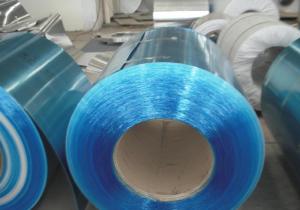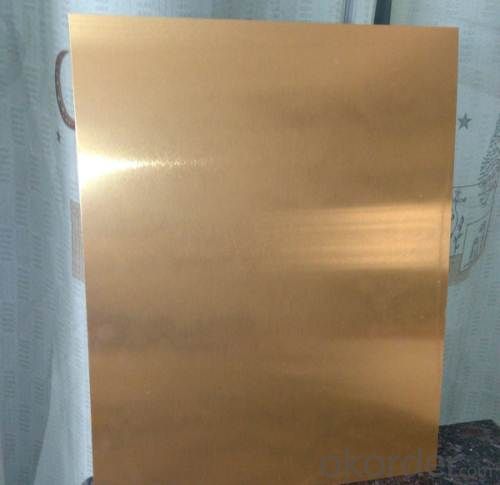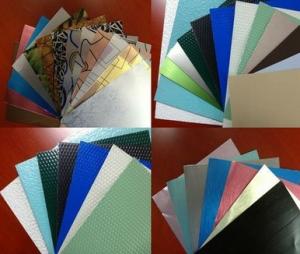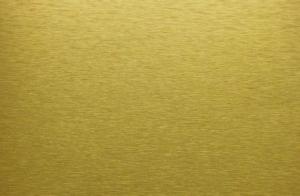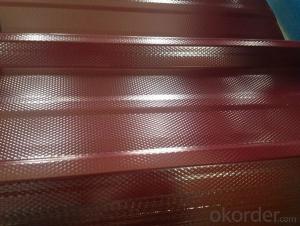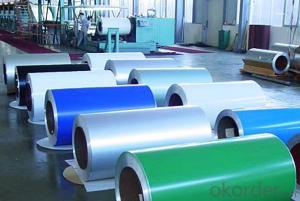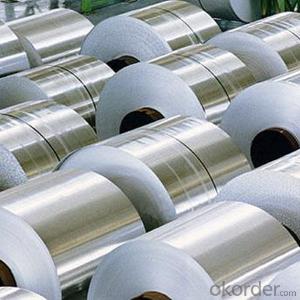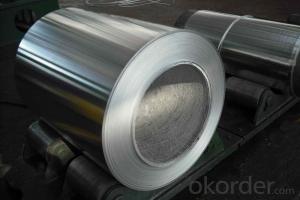Brown Anodized Aluminum Sheets - 1100 3003 3105 Color Coated Aluminum Sheet and Colored Aluminum Coil for Decoration
- Loading Port:
- Shanghai
- Payment Terms:
- TT or LC
- Min Order Qty:
- 5 m²
- Supply Capability:
- 9000 m²/month
OKorder Service Pledge
OKorder Financial Service
You Might Also Like
Aluminum alloy wallboard standard:
PCM is the technique of the printing pre-coating (roll coating) no color difference.
The specification of the wall board: | Max Width 1700mm |
Aluminum alloy sheet: | Base on AA1100, AA3003, AA3004, AA3105, AA5052, AA5754, 1.0-4.0mm thick aluminum alloy panels , according to the Chinese National Standard. |
Painting method: | Adopt the most advanced PCM printing , 2 coating and 2 backing, no color difference, extreme flatness technique method. |
Frontispiece painting: | Adopt KYNAR 500 (more than 70% fluorocarbon resin) |
Frontispiece guarantee: | Coating guarantee for 20 years. |
Film of Face protecting: | Adopt PVC film, standard thickness is 80 μ |
Color requirements: | Color according to the color board or color number of the client’s order. |
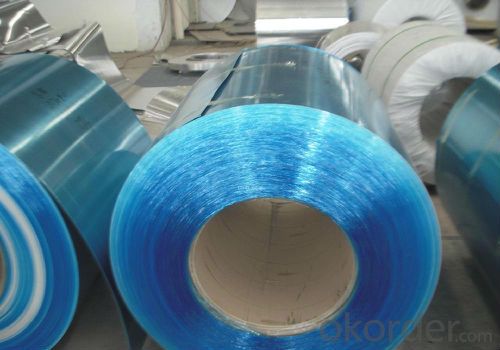
As a credible manufacturer in this field, we guarantee a best quality & short delivery with a long timed experience and technical know-how and wish your company to have a chance to meet a world best-raw material partner!
Our product's details are as following and we need to know some info from you, in order to give you the best price.
1. Your wanted Alloy, Thickness and Size of aluminum sheet
2. Your main use of our aluminum sheet
3. Approximate needed quantity
4. RAL color number ,thickness of the painting film both surface
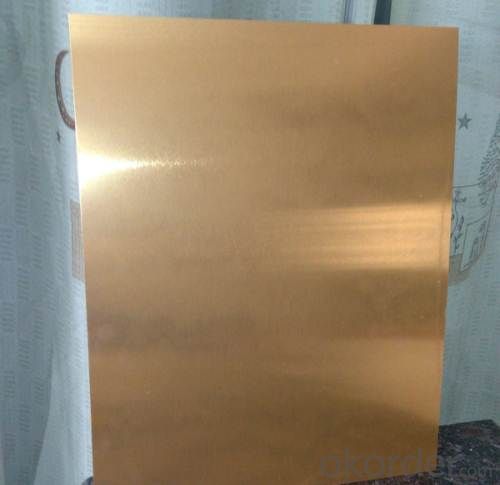
Packaging Details:
1). Each coil to be securely tied with two bands.
2). the contact points of these bands on the coil edge to be protect with edge protectors.
3). Coil then to be properly wrapped with plastic film ,woven belt, resistant paper.
4). Wooden or iron pallet can be used or as your requirements.
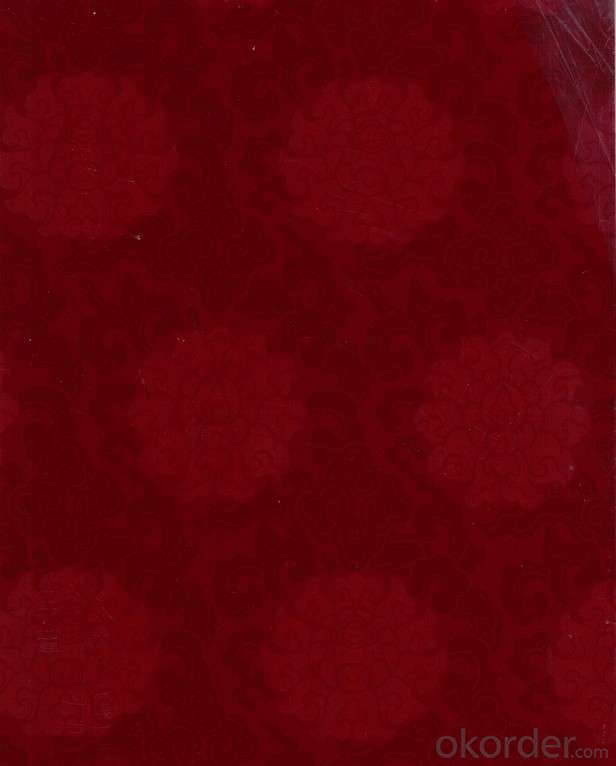
- Q: The which temperature the aluminum evaporates in vacuum?
- Aluminum boils at 2519 °C (4566 °F) at normal pressure. In a vacuum, it might boil (a little) at 808 °C, but actually this is better known as subliming.
- Q: What is the elongation percentage of 101 aluminum sheets?
- The elongation percentage of 101 aluminum sheets indicates the extent to which the material can deform or stretch before it breaks. Factors such as sheet thickness and the manufacturing process can influence the exact elongation percentage of 101 aluminum sheets. Nonetheless, 101 aluminum alloy is widely recognized for its remarkable formability and exceptional elongation properties. Generally, it demonstrates elongation percentages that range from 10% to 30%, allowing the material to stretch by that proportion of its original length before it fractures.
- Q: What are the weight considerations when using aluminum sheets?
- When using aluminum sheets, weight considerations play a significant role in various applications and industries. Aluminum is known for its lightweight nature, making it a preferred choice in many scenarios where weight reduction is essential. Here are some weight considerations when using aluminum sheets: 1. Structural Weight Reduction: Aluminum sheets are commonly used in industries such as aerospace, automotive, and construction, where reducing the overall weight of structures is crucial. The lightweight nature of aluminum allows for improved fuel efficiency in vehicles, increased payload capacity, and lower transportation costs for construction materials. 2. Design Flexibility: Due to its low density, aluminum sheets offer greater design flexibility compared to heavier materials. This weight advantage allows engineers and designers to create intricate shapes and structures without compromising on strength and durability. 3. Handling and Installation: The lightweight nature of aluminum sheets simplifies handling and installation processes. It requires less manpower and equipment, reducing labor costs and increasing productivity. Additionally, aluminum's low weight makes it easier to transport and maneuver during assembly or installation. 4. Corrosion Resistance: Aluminum naturally forms a protective oxide layer, which makes it highly resistant to corrosion. This characteristic eliminates the need for additional coatings or treatments, reducing weight and maintenance requirements. 5. Energy Efficiency: By using aluminum sheets, energy consumption can be reduced in various applications. For example, in the construction industry, lightweight aluminum roofing can help improve the energy efficiency of buildings by reducing the load on heating and cooling systems. 6. Transport and Shipping: Aluminum's lightweight property significantly impacts transportation and shipping costs. The reduced weight of aluminum sheets allows for larger quantities to be transported in a single shipment, reducing fuel consumption and emissions. 7. Electrical Applications: Aluminum is an excellent conductor of electricity. Its lightweight nature makes it an ideal choice for electrical wiring, conductors, and other electrical components, reducing the overall weight of electrical systems. It is important to note that while weight reduction is advantageous in many applications, the specific requirements and constraints of each project should be considered. Proper engineering analysis and consultation are crucial to ensure that the selected aluminum sheet meets the desired weight considerations while maintaining structural integrity and performance.
- Q: Are aluminum sheets conductive?
- Yes, aluminum sheets are conductive. Aluminum is a metal and has a high electrical conductivity. This means that electricity can easily flow through aluminum sheets, allowing them to be used in various applications where conductivity is required, such as in electrical wiring, power transmission lines, and electronic devices.
- Q: Can aluminum sheets be used for electrical busbars?
- Yes, aluminum sheets can be used for electrical busbars. Aluminum is a highly conductive material that has good electrical and thermal conductivity properties. It is also lightweight and cost-effective compared to other metals like copper. However, there are certain considerations when using aluminum sheets for busbars. Aluminum has higher resistance compared to copper, so larger cross-sectional areas may be required to compensate for this. Additionally, proper insulation and joint connections must be implemented to prevent any potential galvanic corrosion issues between the aluminum busbars and other metals in the electrical system. Overall, aluminum sheets can be a suitable choice for electrical busbars, but the specific application requirements and design considerations should be carefully evaluated to ensure optimal performance and safety.
- Q: Can aluminum sheets be used for cryogenic applications?
- Yes, aluminum sheets can be used for cryogenic applications. Aluminum has good thermal conductivity and low density, which makes it suitable for cryogenic environments. It can withstand extremely low temperatures without becoming brittle or losing its mechanical properties. Additionally, aluminum is non-magnetic and has excellent resistance to corrosion, which is important in cryogenic applications. However, it is worth noting that the specific alloy and thickness of the aluminum sheet should be carefully selected based on the specific cryogenic temperature and application to ensure optimal performance.
- Q: How does the alloy composition affect the mechanical properties of aluminum sheet?
- The alloy composition of aluminum sheet strongly influences its mechanical properties. The mechanical properties of aluminum sheet can include tensile strength, yield strength, elongation, hardness, and fatigue strength, among others. Firstly, the alloy composition affects the overall strength of the aluminum sheet. Aluminum alloys are typically mixed with other elements such as copper, manganese, magnesium, and silicon to enhance their mechanical properties. These alloying elements form solid solutions or precipitates within the aluminum matrix, which can significantly increase the strength of the material. For example, adding copper to aluminum forms a solid solution that increases the tensile strength and yield strength of the sheet. Secondly, the alloy composition affects the ductility and formability of the aluminum sheet. Some alloying elements, such as magnesium and silicon, can reduce the ductility of aluminum alloys. This reduction in ductility can make the sheet more prone to cracking or fracturing under stress. On the other hand, certain alloying elements can improve the formability of aluminum sheet, making it easier to shape or bend without cracking. Furthermore, the alloy composition also influences the resistance to corrosion and heat of aluminum sheet. For instance, aluminum alloys with a high content of magnesium, such as the 5000 series, exhibit excellent resistance to corrosion and are commonly used in marine applications. Additionally, some aluminum alloys are developed specifically for high-temperature applications, with alloying elements like copper and zinc enhancing their heat resistance. Lastly, the alloy composition of aluminum sheet affects its microstructure, which in turn affects its mechanical properties. Different alloy compositions can result in different microstructures, such as grain size, grain boundaries, and phase distribution. These microstructural features can affect the strength, hardness, and fatigue resistance of the aluminum sheet. In conclusion, the alloy composition plays a crucial role in determining the mechanical properties of aluminum sheet. By carefully selecting the appropriate alloy composition, manufacturers can tailor the sheet's properties to meet specific requirements, such as strength, ductility, formability, corrosion resistance, and heat resistance.
- Q: Can aluminum sheets be embossed?
- Indeed, it is possible to emboss aluminum sheets. The act of embossing entails producing a design that is elevated or inset on the surface of a material. Aluminum is a versatile substance that can be easily manipulated, including being subjected to embossing. One can employ different techniques in order to emboss aluminum sheets, such as heat embossing or using tools and machines specifically designed for embossing. By undergoing the embossing process, the aluminum sheets gain texture and depth, resulting in an enhanced appearance suitable for a wide range of applications. These applications may include decorative purposes, signage, nameplates, and even the addition of texture to automotive or architectural accents.
- Q: I have a project on the aluminum element. What are the advantages and disadvantages of this element?...What are the risks/dangers?...Thank you so much ---And please tell me where I could find this information too.
- Disadvantages: * Far more expensive that steel. * Limited to certain geometric features using economical processes. * Abrasive to tooling (aluminum oxide is very abrasive). * Difficult to weld. * Prone to severe spring back. Advantages: Aluminum is the preferred choice for fencing due to several inherent advantages of aluminum. The main advantage is that aluminum components do not rust as easily as iron. Aluminum fences are given a powder-coat finish that protects the surfaces. This kind of a finish also enhances its appearance and provides a smooth surface for painting, if desired. All the components of the fence are drilled and powder-coated prior to assembly. Extreme care is taken during assembly by using sturdy fasteners, brackets, and rivets. Wherever these fasteners, etc., need to be visible, attractive stainless steel ones are used. This provides both looks and strength. As aluminum is an easy metal to work with, a plethora of style choices and adornment options are made available to clients. The flexibility of the metal allows for several designs that can complement the facade of the structure they are installed around.
- Q: What are the different surface patterns or textures available for aluminum sheets?
- Aluminum sheets come in various surface patterns and textures, each designed for specific purposes and offering unique aesthetic appeal. Some commonly used surface patterns for aluminum sheets are as follows: 1. Smooth: These sheets have a flat and polished surface without any visible patterns or textures. They are ideal for applications that require a clean and sleek appearance, such as architectural elements or interior design. 2. Diamond Plate: These sheets have a raised diamond pattern on the surface, providing excellent traction and slip resistance. They are commonly used for flooring, stairs, ramps, and industrial applications where grip and durability are essential. 3. Brushed: These sheets have a consistent linear pattern created by brushing the surface with fine abrasive pads. This finish gives a satin-like appearance, making it popular for decorative purposes like signs, furniture, appliances, and automotive trim. 4. Stucco: These sheets have a raised pattern that resembles a stucco wall finish. The texture is achieved by embossing the sheet with a stucco roller, creating a rough and durable surface. Stucco patterned sheets are commonly used for exterior cladding, roofing, and decorative applications. 5. Hammered: These sheets have a unique texture that resembles the surface of hammered metal. The finish is achieved by imprinting the sheet with a pattern of small indentations using a hammer or similar tool. Hammered sheets are often used for decorative purposes, such as backsplashes, countertops, and art installations. 6. Perforated: These sheets have a pattern of small holes punched into the surface, allowing for airflow, light transmission, and sound absorption. They are commonly used for architectural elements, screens, filters, and ventilation systems. These examples represent just a fraction of the surface patterns and textures available for aluminum sheets. Each texture serves a specific purpose and offers distinct visual appeal, enabling a wide range of applications in various industries.
Send your message to us
Brown Anodized Aluminum Sheets - 1100 3003 3105 Color Coated Aluminum Sheet and Colored Aluminum Coil for Decoration
- Loading Port:
- Shanghai
- Payment Terms:
- TT or LC
- Min Order Qty:
- 5 m²
- Supply Capability:
- 9000 m²/month
OKorder Service Pledge
OKorder Financial Service
Similar products
Hot products
Hot Searches
Related keywords
